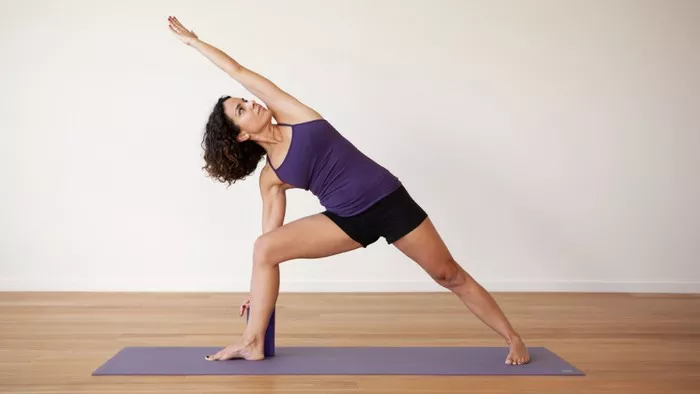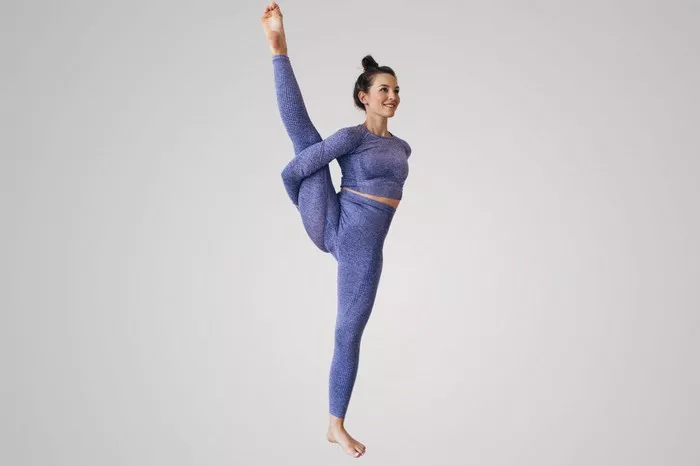Sciatica is a condition that causes pain radiating along the path of the sciatic nerve, which extends from the lower back down to the legs. This discomfort can be debilitating and often limits daily activities. Fortunately, yoga offers gentle stretches and yoga poses that may help relieve sciatica pain. These poses target the muscles around the lower back and hips, promoting flexibility and reducing tension. Incorporating specific yoga poses into your routine can help ease discomfort and enhance overall well-being.
Understanding Sciatica and Its Causes
Sciatica typically occurs due to a herniated disc, spinal stenosis, or muscle tension in the lower back. When these issues compress the sciatic nerve, it can lead to pain, tingling, or numbness along the nerve’s pathway. Understanding the causes of your sciatica is essential for selecting the right yoga poses. Each individual’s experience with sciatica is unique, so listening to your body and practicing mindfully is crucial. Before starting any new exercise routine, especially if you have chronic pain, consult a healthcare professional.
Gentle Warm-Up Poses
Before diving into specific poses, it’s essential to warm up the body. Gentle stretches can prepare your muscles and joints. Begin with simple movements like neck rolls, shoulder shrugs, and gentle twists. These actions increase blood flow and help release any tension in the upper body. Follow this warm-up with a few rounds of Cat-Cow pose. This sequence alternates between arching and rounding the spine, promoting mobility in the lower back. Focus on your breath as you move. Inhale while arching your back (Cow pose) and exhale while rounding it (Cat pose). Repeat for several rounds to awaken the spine.
Child’s Pose for Relaxation
Once warmed up, move into Child’s Pose. This pose provides a gentle stretch for the lower back and hips. Kneel on the floor, sit back on your heels, and stretch your arms forward on the mat. Rest your forehead on the ground. Hold this pose for several breaths, allowing your body to relax and sink into the stretch. Feel the gentle elongation of your spine and the release of tension in your lower back. Child’s Pose is an excellent way to create space in the lower back and can be held for as long as comfortable.
Seated Forward Bend to Release Tension
After Child’s Pose, transition into Seated Forward Bend (Paschimottanasana). Sit on the mat with your legs extended in front of you. Inhale deeply, and as you exhale, hinge at your hips to reach forward towards your feet. It’s essential to keep your spine long as you bend. If you can’t reach your feet, place your hands on your shins or thighs. Hold this pose for several breaths, focusing on relaxing your back and breathing deeply. This forward bend helps stretch the hamstrings and lower back, alleviating tightness associated with sciatica.
Pigeon Pose for Hip Opening
Next, consider incorporating Pigeon Pose (Eka Pada Rajakapotasana) into your routine. This pose is excellent for opening the hips, which can relieve pressure on the sciatic nerve. Start in a tabletop position and bring your right knee forward, placing it behind your right wrist. Extend your left leg straight back. Keep your hips square to the mat. You can either stay upright or lean forward onto your forearms for a deeper stretch. Hold this pose for several breaths, then switch sides. Pigeon Pose can help alleviate tension in the hips and lower back.
Supine Spinal Twist for Lower Back Relief
Another effective pose for sciatica is the Supine Spinal Twist (Supta Matsyendrasana). Lie on your back and hug your knees to your chest. Slowly lower your knees to one side, keeping your shoulders flat on the mat. Extend your arms out to the sides in a T-shape. Gaze in the opposite direction of your knees. Hold this pose for several breaths, then switch sides. The gentle twisting motion helps release tension in the lower back and improves spinal mobility.
Bridge Pose to Strengthen the Back
Incorporating Bridge Pose (Setu Bandhasana) into your practice can strengthen the back and glutes. Lie on your back with your knees bent and feet flat on the mat, hip-width apart. As you inhale, lift your hips towards the ceiling, pressing through your feet. Keep your shoulders relaxed and away from your ears. Hold the pose for several breaths before slowly lowering back down. Bridge Pose not only strengthens the lower back but also opens the hips, promoting better alignment and reducing sciatica pain.
Legs Up the Wall for Relaxation
After performing more active poses, it’s beneficial to include a restorative pose like Legs Up the Wall (Viparita Karani). Find a wall space and lie on your back with your legs extended up the wall. This pose promotes circulation and relieves tension in the legs and lower back. Stay in this position for several minutes, breathing deeply. The inversion also helps reduce stress and promotes relaxation, making it an excellent addition to your sciatica relief routine.
Reclining Hand-to-Big-Toe Pose for Hamstring Stretch
Reclining Hand-to-Big-Toe Pose (Supta Padangusthasana) is another excellent stretch for the hamstrings and lower back. Lie on your back and extend one leg towards the ceiling. Use a strap or towel around your foot to assist in the stretch. Keep your opposite leg bent with your foot on the mat or extended flat. Hold this pose for several breaths before switching legs. This stretch can help relieve tightness in the hamstrings, which may contribute to lower back discomfort and sciatica.
Corpse Pose for Deep Relaxation
Conclude your practice with Corpse Pose (Savasana) to promote deep relaxation. Lie flat on your back, arms at your sides, and palms facing up. Close your eyes and take slow, deep breaths. Focus on releasing any remaining tension in your body. Stay in this pose for at least 5-10 minutes. Corpse Pose allows the body to absorb the benefits of your practice and helps reduce overall stress, which can exacerbate sciatica pain.
Important Considerations
While yoga can be beneficial for sciatica, it’s crucial to listen to your body and avoid pushing into pain. Modify poses as needed to ensure comfort. Using props such as blocks, straps, or bolsters can provide support and enhance your practice. Always prioritize gentle movements and focus on maintaining proper alignment. If you experience sharp pain or discomfort during any pose, back off and consult a healthcare professional if necessary.
Creating a Consistent Practice
To effectively manage sciatica pain through yoga, consistency is key. Aim to practice these poses several times a week. Consider creating a dedicated yoga routine that incorporates these poses, allowing time for warm-up, active stretches, and relaxation. Developing a regular practice not only helps alleviate physical discomfort but also encourages a deeper connection to your body and breath.
See also: What Are the Benefits of Iyengar Yoga Restorative Asanas?
Complementing Yoga with Other Treatments
While yoga can significantly help alleviate sciatica, it’s essential to consider it as part of a holistic approach. Complement your practice with other treatments, such as physical therapy, massage, or acupuncture, if appropriate. Nutrition and hydration also play vital roles in overall health and can support your yoga practice. Stay mindful of your body’s signals, and seek additional treatments that align with your personal health goals.
Conclusion
Yoga can be a powerful tool for managing sciatica pain. The poses mentioned in this article focus on stretching, strengthening, and releasing tension in the lower back and hips. Remember that everyone’s experience with sciatica is unique. What works for one person may not work for another. Be patient with yourself as you explore these poses and find what feels best for your body.
By integrating yoga into your routine, you can create a supportive practice that not only helps alleviate sciatica pain but also enhances your overall well-being. Keep exploring, stay consistent, and most importantly, listen to your body. With time and dedication, you may find relief and improved mobility through the healing practice of yoga.
You Might Be Interested In





















